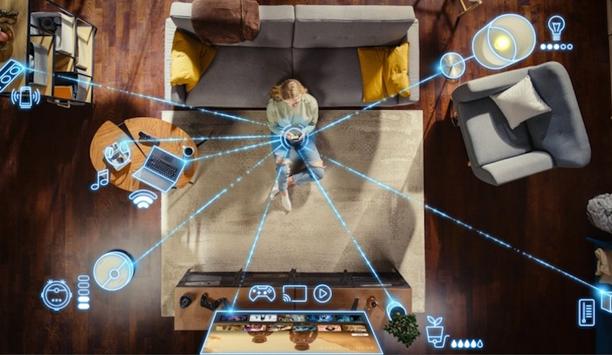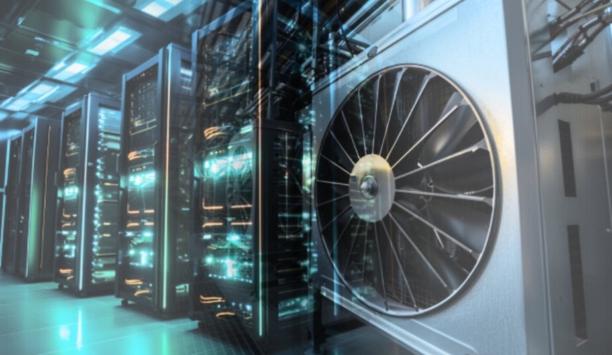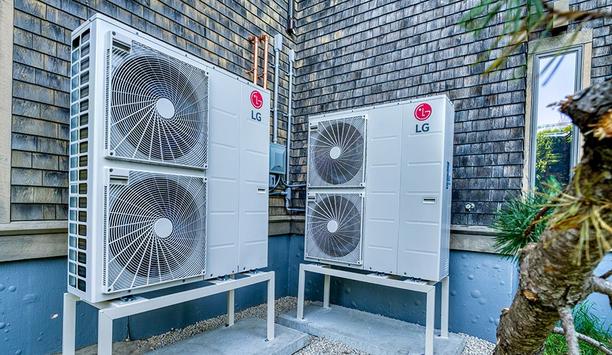Surely not many companies haven't asked themselves at least once what influence increasing digitization and Industry 4.0 will have on their business model. STULZ specialized in data center air conditioning back in 1971, and as a company they have experienced many digital trends in the flesh.
But if they get to grips with the latest reports talking about digital transformation and Industry 4.0, they quickly realize that this time they are facing something bigger.
Digital transformation
Overhasty steps and digital actionism can rapidly backfire and wipe out a lot of capital
One thing they notice is that the arguments are sometimes rather drastic. The impression is this: If they don't begin digital conversion immediately, the company will be finished in a few years' time. Or they can secure their future, turn everything upside down and undergo digital transformation.
Well, they don't see it as drastic as all that, but all companies should take action. They should analyze their business models, and they really need to try and determine to what degree digital transformation is necessary. Overhasty steps and digital actionism can rapidly backfire and wipe out a lot of capital.
Online consultation
Companies specializing in complex industrial goods know that personal consultation, for example, cannot be replaced 1:1 by online consultation. However, when carrying out an analysis many companies will realize that they already started along the road to digital transformation a long time ago (see next paragraph).
Another difficulty during analysis is that digitization, digital transformation, IoT, big data, cloud computing, and Industry 4.0 are often all lumped together, so no one can figure out whether they are affected and what exactly is important for the company.
Consumer behavior
Consumer behavior to products, services, contact , etc. is altering due to mobile devices
The fact is that every company is affected, whatever they call the process. Consumer behavior in relation to products, services, communication, etc. is changing due to powerful mobile devices, fast data networks and state-of-the-art data centers.
In addition, all data are collected and every technical device is connected. This is what the digital future looks like – and it is as inevitable as the rising of the sun in the morning.
localization of real-time data
Some negative aspects are undoubtedly apparent, but there are numerous advantages and opportunities that consumers and companies can use to their benefit. Every entrepreneur should ask themselves this: Exactly where must they digitally expand their business, their production, etc. in order to still find buyers in the future, focus production better, or sell their services?
The localization of real-time data and their use in personalized customer apps, in particular, offer brick-and-mortar stores the means of making personalized offers that are dispatched directly, for example, here, the right timing matters and for this they need to know exactly when a customer is ready to buy or – better still – when he has to buy, because the refrigerator is empty or his shoes are worn out.
Digital transformation and Industry 4.0 cooling solutions
Moreover, existing data centers are regularly being equipped with new, more powerful servers
Digital transformation is, without doubt, one of the primary drivers of change in air conditioning systems for data centers, but further important reasons also exist: rising energy prices, changing regulations, new environmental requirements, higher safety standards, the allowance of more heat and humidity in data centers, and geographical considerations are some additional factors.
However, it is impossible to deny that new data center trends have arisen due to digital changes, especially in recent years. Digitization generates more data, which has led to the construction of many new, larger data centers. Moreover, existing data centers are regularly being equipped with new, more powerful servers.
Air conditioning units
However, modernization in the form of new servers confronts data center operators with problems. Servers can easily be replaced with more powerful devices. This inevitably leads to a higher heat load over the existing surface area. The air conditioning units can generally be modernized, but it is not that simple to increase the number of chillers to remove the higher heat load.
If a data center was planned for a heat load of 1 MW 10 years ago, and now 3 MW and more is being produced in the same space, the entire infrastructure – pipes, pumps, raised floors – has to be renovated. Additionally, more space is required in the data center for more air conditioning units, and further space for chillers is also needed outside the building.
Modernization with chillers and air-handling units
In their opinion, data center operators have various means at their disposal for converting an existing structure
In their opinion, data center operators have various means at their disposal for converting an existing structure. When renovating an existing CW system, chillers must be used that are specially designed for data center air conditioning, and feature maximum availability and Free Cooling, for example.
This minimizes the energy disadvantages of conventional chillers. A standard chiller from the building's air conditioning system is out of place here, because it does not satisfy the project-specific requirements of a data center.
Heat exchanger surface
It is precisely for this reason that they developed the CyberCool 2. With the CyberCool 2, they offer a chiller with maximized heat exchanger surface areas and maximum-size fans, which exploit the available space down to the last millimeter to improve air conduction.
With the addition of effective Free Cooling and newly designed air conduction, the cooling capacity over an existing area is increased. Combined with maximum-size CW indoor units, existing space can be put to better use, and then nothing stands in the way of expansion and more powerful servers.
Structural modifications
High-performance air handling units are positioned directly on or next to the building
In addition to special IT chillers, air handling units are another means of intelligently enlarging a data center. High-performance air handling units are positioned directly on or next to the building.
Further air conditioning units inside the data center are not needed, because with the air handling unit all the necessary chilling components are integrated in one housing. What's more, the unit can be equipped with various components for Free Cooling, compressor cooling, and adiabatic cooling, to suit demand and the location. Structural modifications to the building envelope are essential for its use.
AirHandler systems
A connection must be created in the raised floor in the data center between the air handling unit and the supply air and the same applies to the exhaust air. These are measures that cannot always be implemented but are still less complicated than laying completely new lines through an existing building.
Another advantage of the AirHandler systems is maintenance. Service engineers no longer need to enter the building to service the entire chilling system.
Hyperscale data centers need scalability and efficiency
These days, all large data centers are extremely homogeneous in their construction
Servers in hyperscale data centers are designed on the basis of standardized criteria, and their architecture is identical down to the last detail. This makes data centers true wonders of scale and enables the decentralized pre-configuration of racks, among other things.
These days, all large data centers are extremely homogeneous in their construction. This trend was triggered by virtualization, cloud computing and rising internet use, and has dominated modern data center architecture for years.
chilling systems
The cooling technology, like the server architecture, needs to come with a high degree of scalability. It is especially interesting to note that as well as scalability, chilling systems also need to satisfy numerous individual requirements.
This sounds like a contradiction in terms, but there is an easy explanation. Hyperscale data centers are being built all over the world in wildly differing regions and climates. A data center on the outskirts of an urban center can make use of an air conditioning solution that would not be feasible in a city center, simply because the necessary space would be lacking.
Efficient air conditioning solutions
Hyperscale data centers are utilized 24/7, and their operators always have an eye on energy consumption
On the other hand, a homogeneous server structure can be implemented without problem in virtually any data center. In approximately 70-80 % of the projects, they realize that the air conditioning units and chillers need to meet individual, project-specific requirements.
Hyperscale data centers are utilized 24/7, and their operators always have an eye on energy consumption. As a result, they can only consider extremely efficient air conditioning solutions.
Indirect and Direct Free Cooling
Here, systems with Indirect Free Cooling and Direct Free Cooling combined with compressor cooling have proven their worth. The problem is that Free Cooling has become a marketing slogan in the world of cooling, and also many manufacturers who have not always roots in data center cooling have jumped on the bandwagon.
Indirect Dynamic Free Cooling
Infinitely adjustable EC components with maximum-size heat exchangers are an absolute prerequisite
Air conditioning systems with optimized Free Cooling are designed in such a way that they use Free Cooling for long periods of the year and exploit the potential of outside air even in summer. For this, intelligent system control is required, and infinitely adjustable EC components with maximum-size heat exchangers are an absolute prerequisite.
For Indirect Dynamic Free Cooling, they are able to precisely calculate when and how much pure compressor cooling is needed for a project, depending on the region. This way, TCO can be accurately calculated and operators have long-term peace of mind.
Conclusion
In the end, it is certainly true to say that the choice of the right cooling is always influenced by different factors. And digital transformation is definitely one of them. It has been a driving force in the past due to continuous change and will continue to dominate the market in the future.
It is vital that they recognize early on the signs that herald change. They have been working closely together with the customers for decades, and when it comes to change in the world of data centers, they are at the source.
Industry 4.0
However, change generally doesn't come out of the blue. They invest considerable sums in developing and improving the products, and are also interested in the many small changes that help to bring down energy costs. What influence Industry 4.0 will have on cooling is largely still open to question.
They suspect that the smaller and micro data center sector will grow, because processing capacity and data streams will increasingly have to be ready and available in local networks. With all trends, they have to bear in mind the fact that data centers are mission-critical systems, and availability has to be a consideration in every decision involving chilling systems. They cannot afford to cut costs when it comes to availability.
















